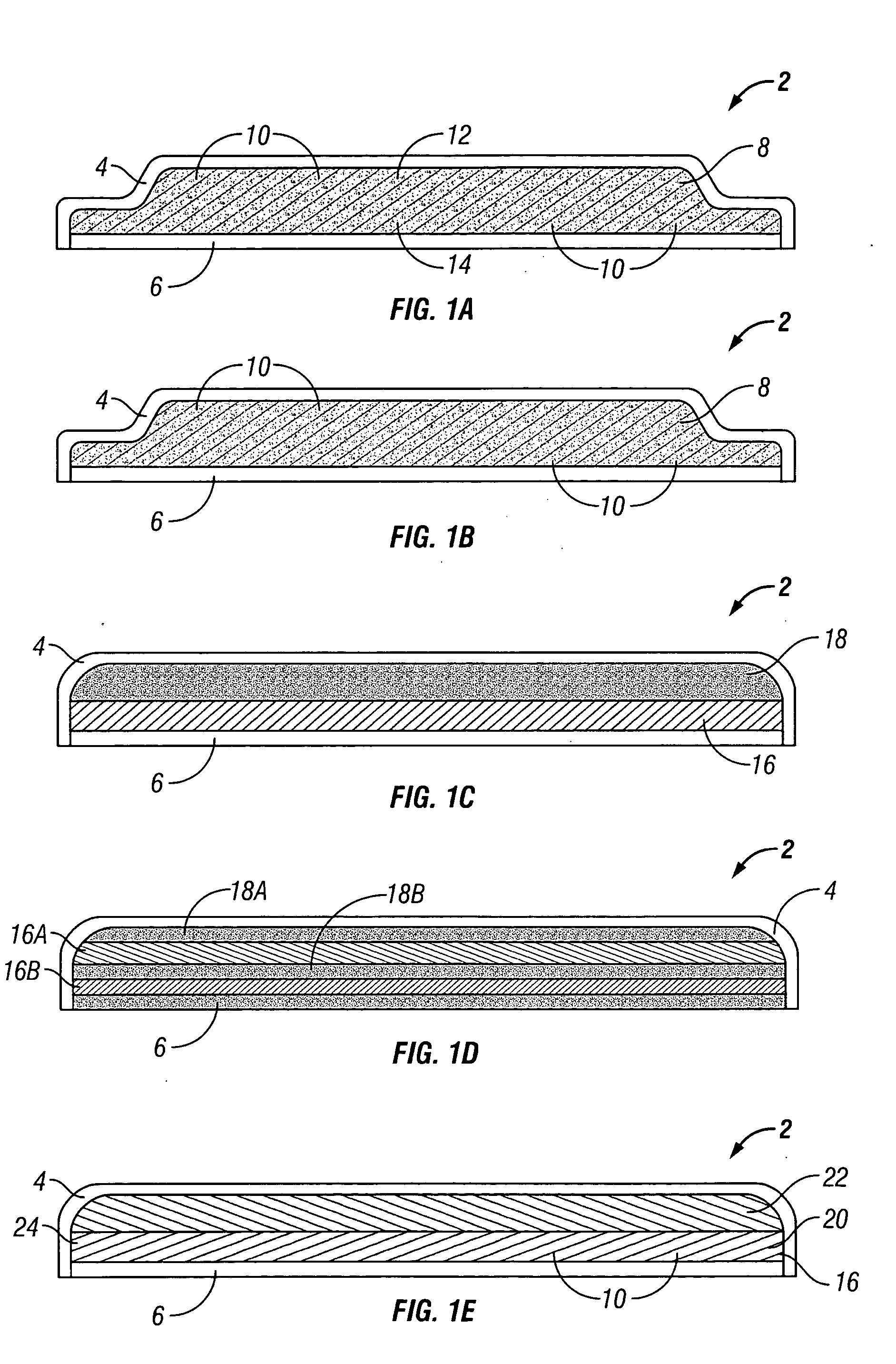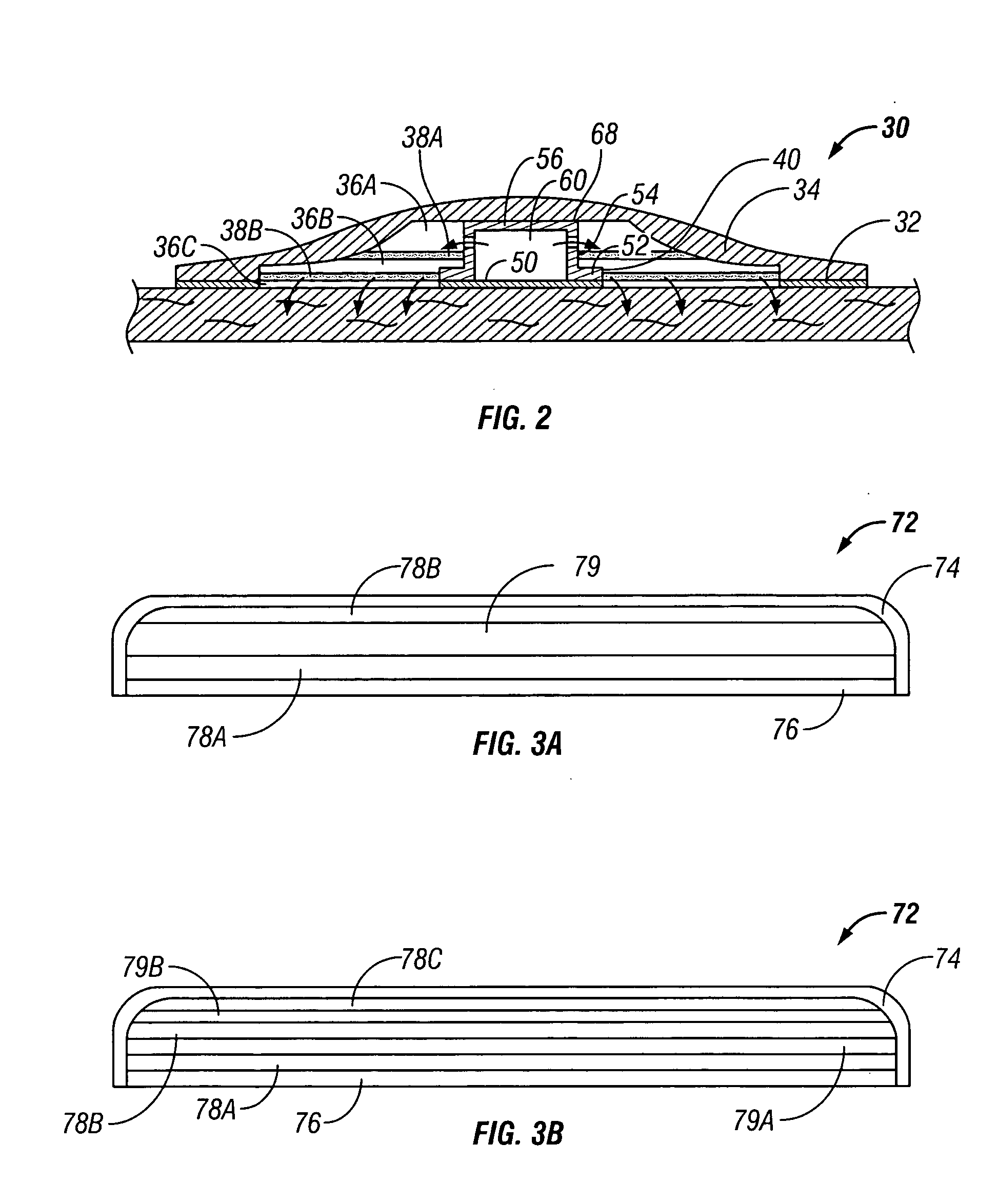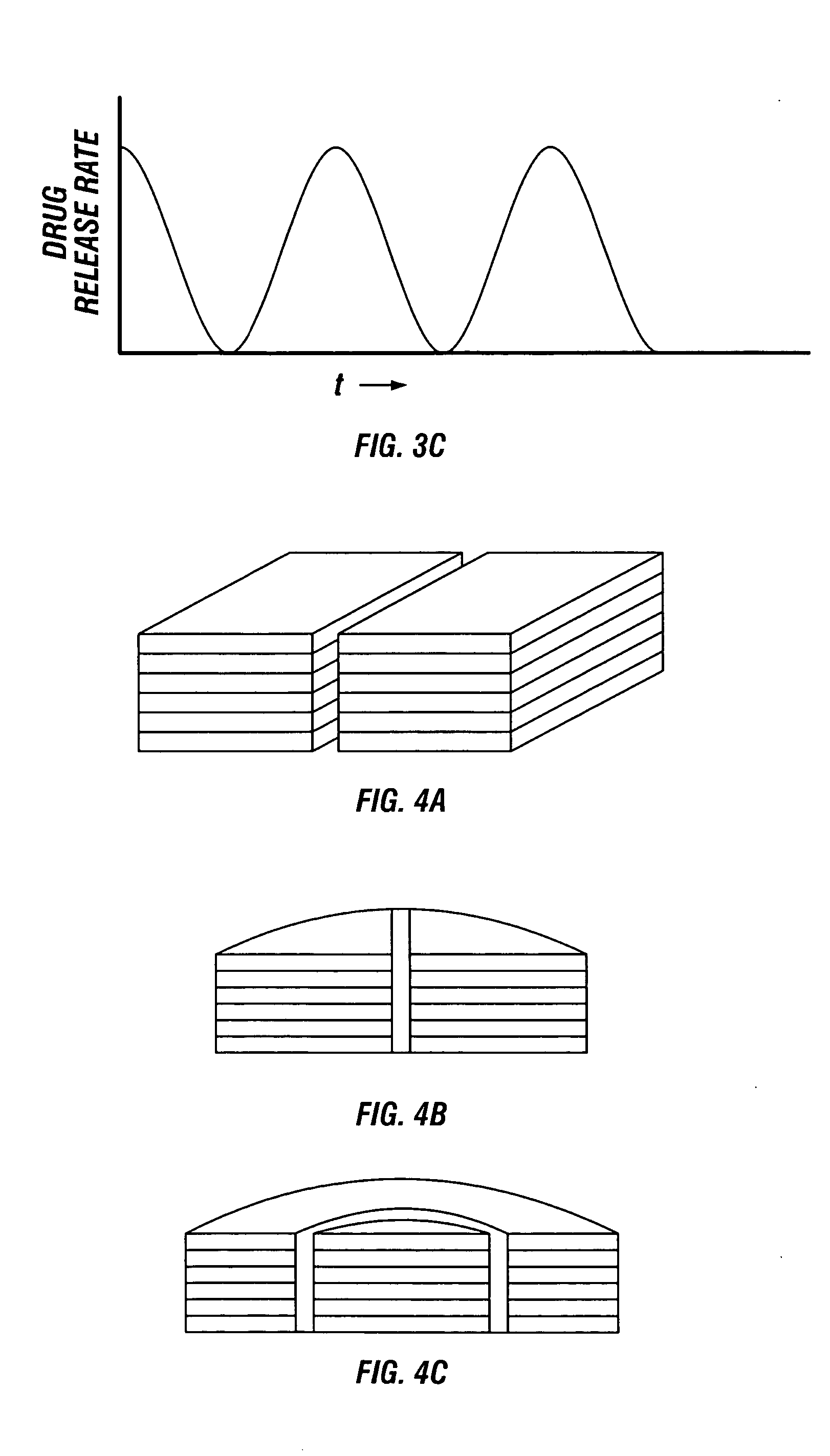Dosage forms and layered deposition processes for fabricating dosage forms
a technology of dosage forms and layered deposition processes, applied in the field of dosage forms, can solve the problems of high loading of active agents, difficult to achieve the solubility limit of active agents in the matrix, and the delivery of active agents with a single profil
- Summary
- Abstract
- Description
- Claims
- Application Information
AI Technical Summary
Benefits of technology
Problems solved by technology
Method used
Image
Examples
example 1
Fabrication of a Gastrointestinal Patch Using a Single Drop Dispenser
[0099] This example describes a method for making a gastrointestinal (“GI”) patch with an osmotic push-pull engine. The patch will have a low profile and will fit in a size 00 capsule. The diameter of the disk will be 4 mm or smaller, and the aspect ratio will be 1 (total disk thickness) to 10 (disk diameter) or smaller. The disk will consist of 6 strata: mucoadhesive, membrane, drug, membrane, osmotic agent, and membrane. In general, the fabrication procedure is to sequentially print multiple layers of each material to constitute a stratum with drying between successive printed layers and between successive strata.
[0100] A TEFLON coated surface (or other surface having chemistry which permits easy release of the printed patch) is used.
[0101] First, carbomer (or another mucoadhesive polymer) is printed by inkjet from an aqueous or mixed aqueous-alcoholic solution onto the TEFLON coated surface in a suitable patt...
example 2
Fabrication of a Transdermal Patch Using a Single Drop Dispenser
[0108] A pressure-sensitive adhesive, such as polyisobutylene or silicone, is cast onto a peelable liner, such as silicone-coated polyester, using a conventional solvent casting process.
[0109] A series of drug and matrix layers are alternatingly printed over a portion of the solvent-cast pressure-sensitive adhesive layer.
[0110] More particularly, a matrix layer, such as a ethylene-vinyl acetate copolymer layer, a poly(vinyl alcohol) layer, or a poly(vinyl pyrrolidone) layer, is printed from an organic or alcoholic solvent (with overprinting and drying as needed to achieve the desired thickness). After final drying of the matrix layer, a drug layer is printed on top of the matrix layer from an organic or alcoholic solvent (with overprinting and drying as needed to achieve the desired thickness). After final drying of the drug layer, a second matrix layer, is printed from an organic or alcoholic solvent (with overprint...
PUM
 Login to View More
Login to View More Abstract
Description
Claims
Application Information
 Login to View More
Login to View More - R&D
- Intellectual Property
- Life Sciences
- Materials
- Tech Scout
- Unparalleled Data Quality
- Higher Quality Content
- 60% Fewer Hallucinations
Browse by: Latest US Patents, China's latest patents, Technical Efficacy Thesaurus, Application Domain, Technology Topic, Popular Technical Reports.
© 2025 PatSnap. All rights reserved.Legal|Privacy policy|Modern Slavery Act Transparency Statement|Sitemap|About US| Contact US: help@patsnap.com



